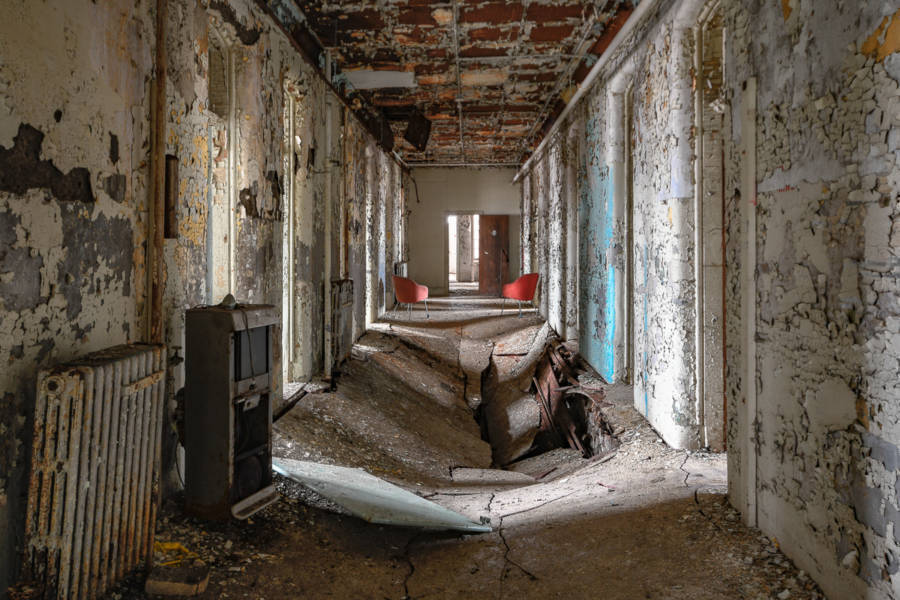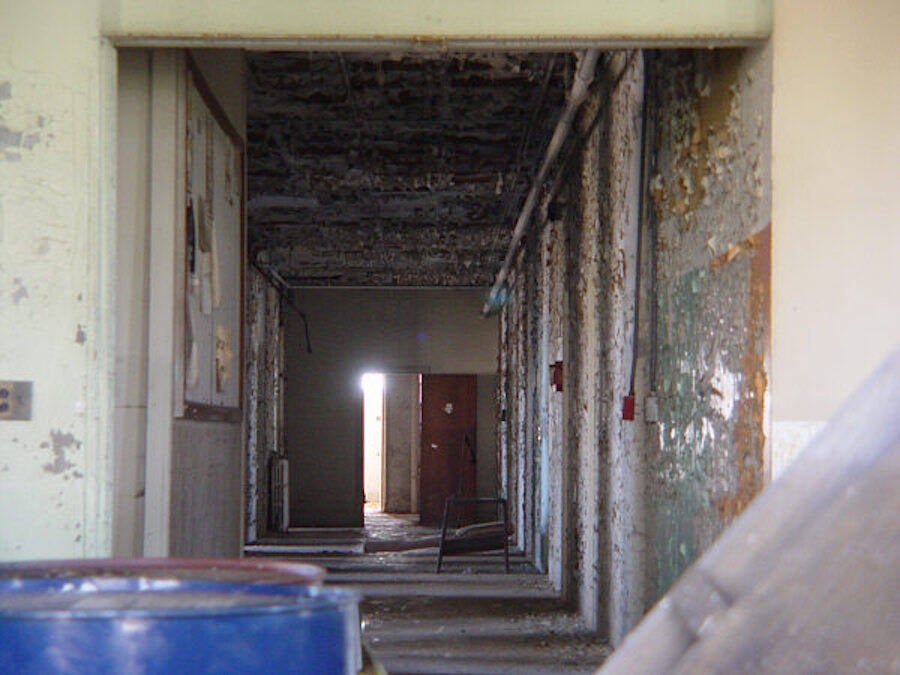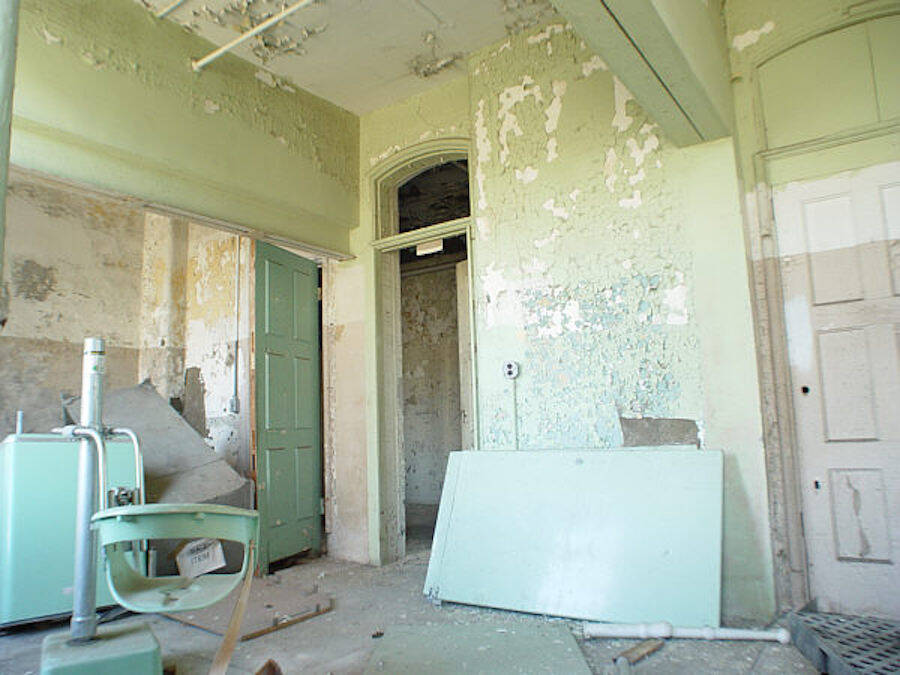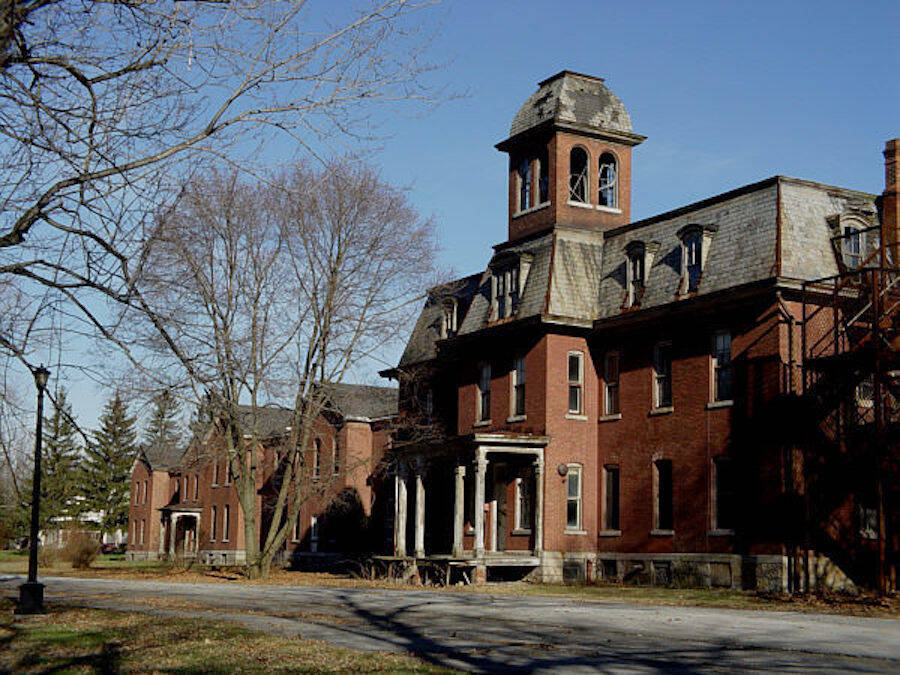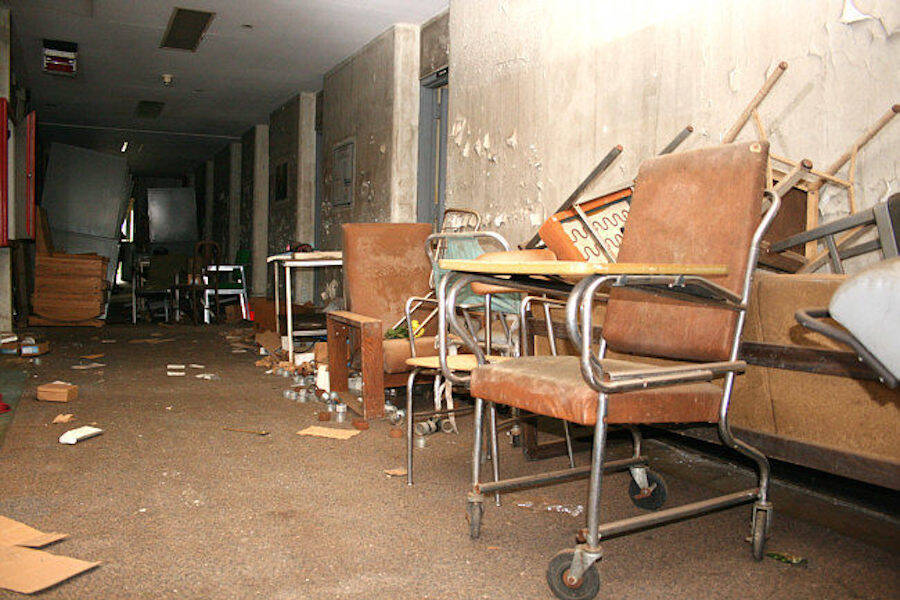The Willard Asylum For The Chronic Insane
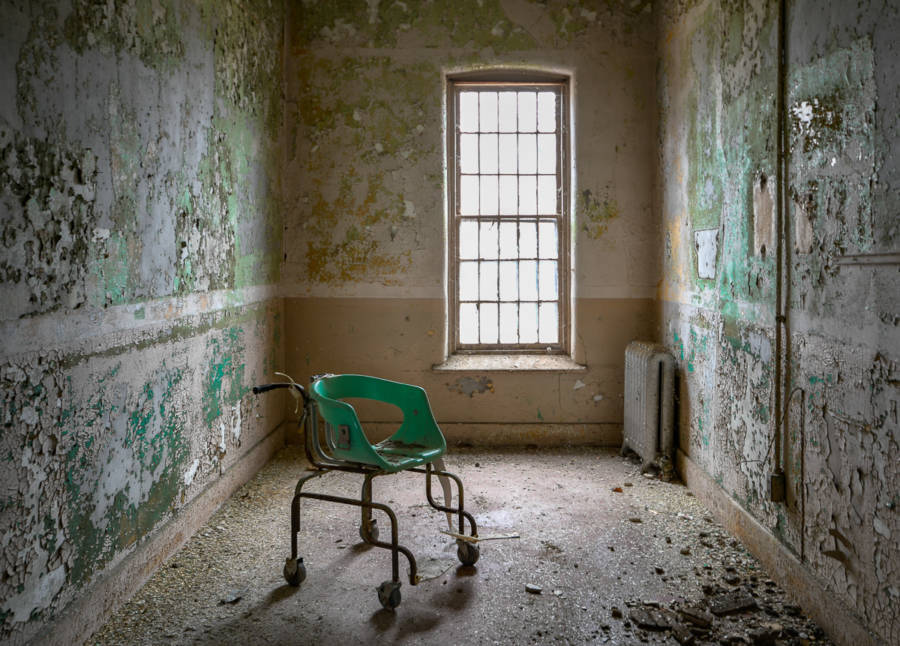
FlickrOne of the many abandoned rooms in the Willard Asylum for the Chronic Insane.
It’s easy to get lost in the scenic beauty of Seneca Lake, New York. Many tourists travel to the Finger Lakes region every autumn just to marvel at the changing foliage. But amongst the colorful tourist attractions lies something a little more ominous: the Willard Asylum for the Chronic Insane.
The now-abandoned institution first opened its doors in 1869. Willard and other asylums like it hoped to offer more humane treatment for those with mental illness than what was common at the time. Back then, anyone without family or means was simply relegated to almshouses, which were overcrowded and underfunded. Some were even sent to prison.
Abraham Lincoln signed off on New York Surgeon General Dr. Sylvester D. Willard’s proposal for the state-run hospital — and he did so just days before he was assassinated. The first patient was a woman named Mary Rote, who was described by staff as “demented and deformed.”
Rote had spent 10 years in an almshouse, and sadly, many other patients also had tragic backstories. One girl had been shackled in a cell as a young child, and another patient arrived at the facility in a chicken crate.
With mental illness still very much misunderstood, many patients suffered from afflictions as trivial as “nervousness” or “feeblemindedness.” Others were described simply as suffering from “chronic” or “acute” insanity.
The facility was divided by gender, and each side of the hospital was further divided between violent patients and non-violent patients. Since the land surrounding the institution was originally intended to be farmed, the Willard Asylum grew its own crops and allowed some patients to tend to them.
The unrestricted nature of treatment included most patients freely walking about, with activities like sewing classes being offered and amenities ranging from a gym to a bowling alley to a movie theater. However, some patients were also forced to undergo electro-shock therapy and ice baths.
Sadly, many patients were never able to leave Willard Asylum after arriving there. The on-site cemetery is filled with thousands of former patients, with only numbers marking their graves instead of their names.
Willard Asylum closed in 1995 after discharging its last patient. Before it became abandoned, however, the Willard Suitcase Project was born. The endeavor began with a cleaning person who found hundreds of old suitcases in the attic — confiscated from patients upon their arrival at Willard. The project, which documents photos of and information about the suitcases, hopes to match these mementos to the families of their owners.
